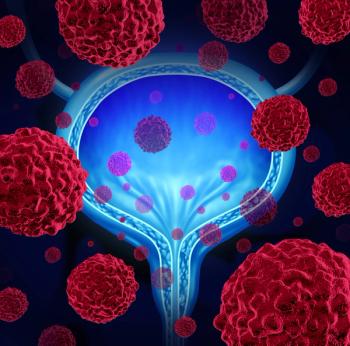
Clinical Model Predicts Survival for Atezolizumab in Bladder Cancer
A newly developed clinical model can predict overall survival for patients diagnosed with advanced bladder cancer who are treated with atezolizumab.
A newly developed clinical model can predict overall survival for patients diagnosed with advanced bladder cancer who are treated with the immune checkpoint inhibitor atezolizumab, researchers announced (abstract 413) at a press conference ahead of the 2018 Genitourinary Cancers Symposium, held February 8–10 in San Francisco.
The US Food and Drug Administration has approved five new immunotherapies for urothelial cancers in recent years.
“Based on the rapid availability of new therapies, we thought it was important to try to assess which patients might benefit the most from atezolizumab, which is one type of these new therapies,” said lead study author Gregory Pond, PhD, associate professor in the department of oncology at McMaster University in Hamilton, Ontario, Canada.
“We believe we’ve developed the first prognostic model that, once confirmed in larger studies, could provide a critical decision-making tool for clinicians,” Pond said.
Atezolizumab inhibits the programmed death ligand 1 (PD-L1) protein, permitting patients’ immune cells to recognize and attack tumor cells. The authors analyzed data from a total of 401 patients who had participated in two clinical studies of atezolizumab immunotherapy as a treatment for advanced urothelial cancers refractory to standard-of-care cisplatin chemotherapy. The model was developed with data from the phase II IMvigor 210 study (n = 310) and subsequently validated with data from the phase I PCD4989g trial (n = 91).
This prognostic model includes six factors: ECOG performance status (1 vs 0), presence of liver metastasis, elevated blood platelet count, increased neutrophil-to-lymphocyte ratio (an indicator of inflammation), anemia, and elevated lactate dehydrogenase levels (an indicator of tissue damage).
A model score reflecting how many of these six factors applied to patients predicted their overall survival.
In the IMvigor 210 study cohort, the median overall survival among patients with no or 1 of these factors was 19.6 months, 5.9 months for those with 2 to 3 factors, and 2.6 months for those with 4 or more of the factors.
“PD-L1 score was statistically significant when adjusted for the optimal model but did not improve clinical interpretability,” Pond noted.
While the PCD4989g trial data validation analysis supported the model, that finding was based on only 91 patients and studies employing larger validation cohorts are required, Pond cautioned. His team also plans to conduct subgroup analyses and to test the model with other patient populations and immunotherapies.
Newsletter
Stay up to date on recent advances in the multidisciplinary approach to cancer.































































































